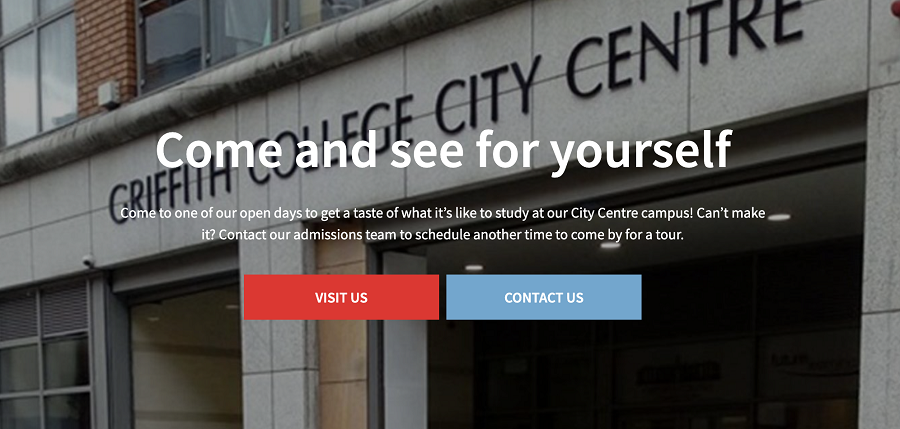
A digital marketing audit provides a framework that your school can use to make its recruitment strategy as effective as it could possibly be. Any school that has invested in a digital marketing audit knows how exciting—yet overwhelming—it can feel to open the document and be faced with pages and pages of ideas, suggestions, and areas of improvement.
It’s important to start bringing these ideas to life as quickly as possible. After all, an audit provides you with the keys for recruitment success, and all your school has to do is use them.
But that begs the question: where should you start? Our blog offers some suggestions. Read on to learn how you can make the most out of your digital marketing audit as soon as you receive it!
Adjusting Your Brand’s Messaging After a Digital Marketing Audit for Schools
If defining or updating your personas was part of your school’s audit, make sure that they are at the forefront of your digital marketing strategy going forward.
It’s easy for schools to say that they’re going to ‘keep their personas in mind’ when implementing a new tactic or improving a preexisting strategy, but it’s more difficult to define how, exactly, they’re going to do that.
Here are a few actionable strategies that you can use to ensure your marketing efforts are optimally tailored to your student personas.
Rethink Your Blog Calendar
If your school has a blog on its site—hint: it should!—take a look at the kinds of blogs you typically post, as well as any upcoming posts you have scheduled. Are these topics optimally aligned with your personas’ interests? Does each post incorporate one of your school’s key messages?
The next step is to create a persona-centred content calendar for the upcoming month. At HEM, we generally recommend creating content calendars one month in advance—that way, you’re not scrambling for blog ideas at the last minute, but you’re not so far in advance that you risk your topics becoming irrelevant by the time you post them. Each blog should also hammer home one of your school’s key selling points—aka key messages—such as its international reputation, its highly practical training, or the travel opportunities it offers, to name a few.
Example: Sample key message for an online learner persona that is reflected perfectly in a blog by the UK College of English.

Tweak Social Media Messaging
Next, repeat the same process with your social media posts. Compare your social media content with your student personas and key messages to determine what you should be doing differently.
Consider whether there are different kinds of posts you should be creating, or other social media channels your school should build a presence on. Be sure to take note of your tone, as well as the calls to action you use, to make sure your messaging is optimally targeted to your prospective student audience.
Example: Two Twitter posts from Algonquin College. Notice the different tone of each post, which demonstrates the school’s intention to target distinct audiences with each post.


Update Key Web Pages
Just as you did with your digital content and social media posts, examine key pages on your school’s website to make sure your copy is in line with your student personas. The goal is to convey your school’s unique selling points as clearly, quickly, and effectively as possible on these pages.
Your personas’ motivations and concerns can be especially helpful for this process. Make sure to emphasize the kind of information that prospects need to convert, as well as address anything that may hold prospects back from applying to your school.
Any information you include should also be optimally relevant: after all, these pages occupy prime real estate on your school’s site, and play an integral role in your admissions process.
Example: A course page for Cumberland College. The moment a prospective student lands on the page, they’ll know the nuts and bolts of the course, such as when it starts and how long it lasts, as well as the purpose of the program: to provide eminently practical training for digital marketing experts.

Use Your Education Digital Marketing Audit for Keyword Optimization
A digital marketing audit for schools is all about boosting your visibility, whether that be on a specific channel, or in general. Regardless of whether you’ve opted for a large-scale digital marketing audit, or one that focuses on a specific aspect of recruitment, keywords will likely play an important role.
Whether your goal is to boost organic search traffic, optimize your paid advertising strategy, or even something as specific as generating more views for your videos, an audit performs the valuable service of reevaluating your school’s keyword strategy.
This data allows your school to define which keywords it wants to improve visibility for. From there, all your school needs to do is strategically integrate these keywords into relevant content.
Example: Where to integrate keywords in your blog posts. Try to make your keywords blend naturally into your content—otherwise it could detract from your prospects’ reading experience.

While optimizing text-based content for SEO is becoming increasingly common practice amongst schools, you shouldn’t just stop there. After all, the keyword investigation your audit provides is likely very comprehensive, so it’s important to make the most out of the insights it offers.
Another way to boost search visibility on your site is to optimize your video content for SEO. You should strategically integrate keywords into the title, description, and file name of each video you create. If you upload your video to a platform like YouTube—something which we highly recommend—you also have the opportunity to add keyword-centred tags.
Example: A video on Columbia University’s YouTube channel, which clearly incorporates undergraduate education-related keywords.

Updating Your School’s Branding Post-Audit
An audit is a great way to evaluate your school’s brand to assess whether your visual identity is in line with the latest digital trends.
To update your branding according to the recommendations made in your higher ed digital marketing audit, create a list of priorities regarding what you want to update first. After all, there are visual elements on practically every digital channel—from social media to email to your website and even your PowerPoint template for presentations—as well as non-digital channels, so updating your school’s visual identity is not a quick nor straightforward process.
You should also assess whether your school is able to create all the needed elements, such as logos and social media banners, in-house, or whether you’ll need help from an outside agency.
If any of your school’s channels are lacking visuals, consider investing in a stock photo account. This is a great way to spruce up your school’s website—especially course pages and blog posts. You may also want to make an effort to take more photos of your campus and its community to use for various digital marketing endeavors.
Example: Griffith College does a great job at incorporating images of its campus across its website. High quality landscape photos are also great for creating email banners, social media posts, and more.



Using Your Higher Ed Digital Marketing Audit to Maximize Your Enrollment Funnel
The enrollment funnel is the backbone of any school’s recruitment efforts, so it’s important to ensure your funnel is functioning as smoothly as possible. This requires reevaluating your team’s workload to ensure you’re doing everything you can to try and guide each lead through the admissions process.
If a lead conversion analysis was in the scope of your education marketing audit, use these findings to improve your team’s productivity. The faster you put this insight into action, the quicker you’ll start saving time and generating more applications.
Most lead conversion audits include an analysis of your school’s funnel through the lens of its admissions staff. This will usually look something like the chart below, which shows how many leads are assigned to each staff member over a given timeframe:

This kind of information will show you which point in the funnel your staff members best excel at. Take Staff 1 for example: although they are allocated a relatively small share of leads, they generate the most students. Staff 2, in contrast, is great at urging leads to start their application – but few become students.
From here, your school may want to sit down with its admissions staff to discuss their strategies, as well as brainstorm how each one can improve their personal funnel. These insights can then be shared amongst your team. Staff 1, for instance, may have great strategies to facilitate leads through the last step in the enrollment journey, while Staff 2 may have pointers on getting prospects to the application stage.
The above diagram also demonstrates that the leads aren’t being fairly allocated amongst staff members. In this case, it can be helpful to either implement or update a round robin workflow that more fairly distributes leads amongst your team.
Example: A sample round robin lead assignment that allocates leads to different users based on the student’s preferred campus.

You may also want to reevaluate your team’s workload to make sure they have enough time to adequately follow up with these leads in order to properly nurture them through the enrollment funnel. During the aforementioned interviews, ask your staff what percentage of their week is devoted to prospective students, in contrast to other tasks.
Your school may also want to assess which admissions-related tasks are taking up the most of this time, in order to discern whether you should invest in software to streamline these tasks. This information can also help your school decide whether they need to hire more people or switch up who does what to ensure you’re devoting the necessary time to each lead.
Using Your Higher Ed Digital Marketing Audit to Improve CRM & Marketing Automation Use
If you want your admissions team to operate more efficiently and effectively, CRM and marketing automation tools can be a great help—if you know how to use them properly, that is.
An audit can provide a number of actionable insights related to your CRM and marketing automation efforts, but you’ll never reap these benefits if you don’t have the people to carry them out. Whether the audit identified issues with your workflows or your lead scoring system, you’ll need people in charge of coordinating these updates.
You may want to have one person overseeing all CRM activities, or assign each of your admissions officers a CRM-related task (such as updating autoresponders, creating segments, or monitoring productivity, etc.). Make sure to ask your staff to take note of how long these activities take each week so you can have a better understanding of your team’s productivity. Keep in mind that your team may be able to complete these tasks faster over time.
Based on the recommendations your audit outlines, you may also have to allocate time to larger projects such as implementing a lead scoring system or creating workflows. Depending on your school’s resources and time constraints, you may want to opt for an external agency for these projects.
Regardless of whether you’re looking at your audit’s CRM recommendations or its student personas, it’s important to keep your school’s priorities and bandwidth in mind as you bring these insights to life. These are important factors to consider whenever you’re implementing a new digital marketing strategy, but it’s especially critical when you have such a large number of updates to be made across multiple channels.

